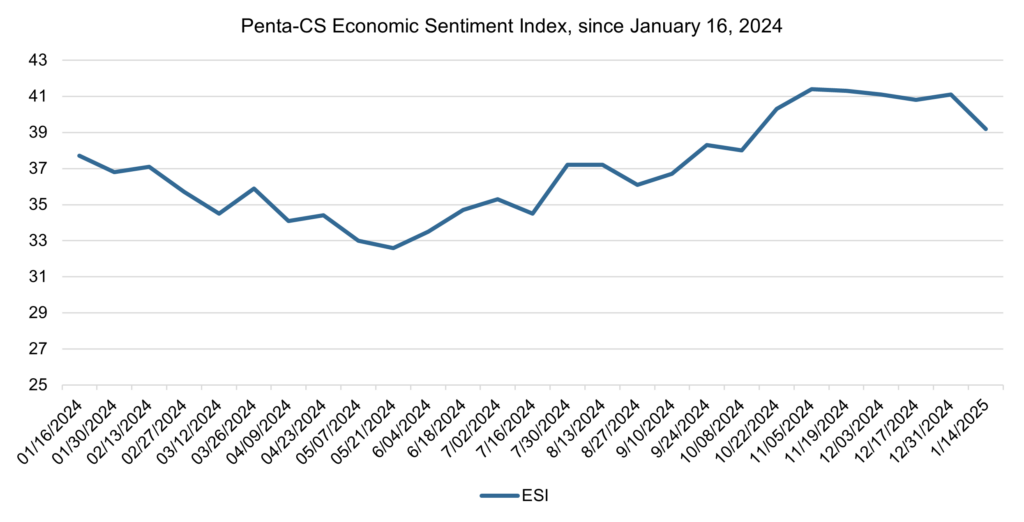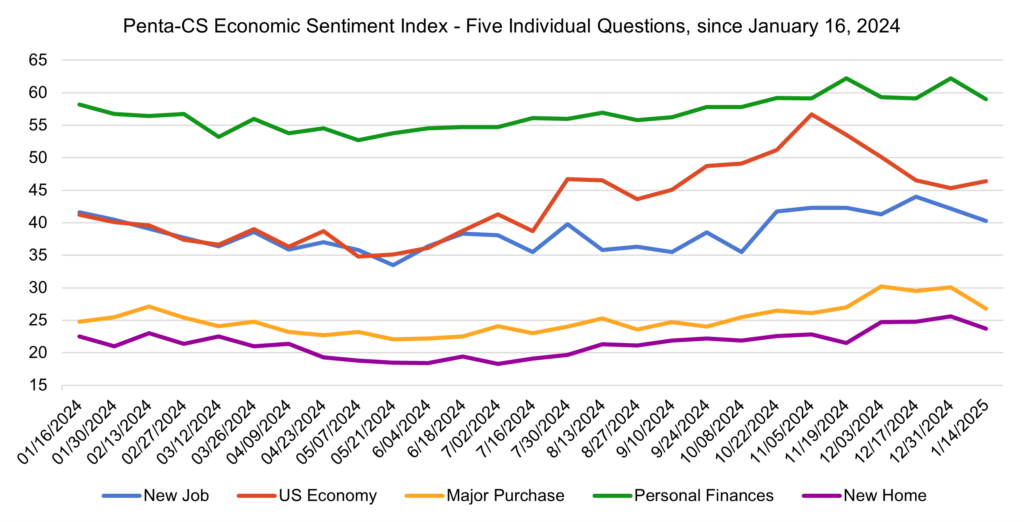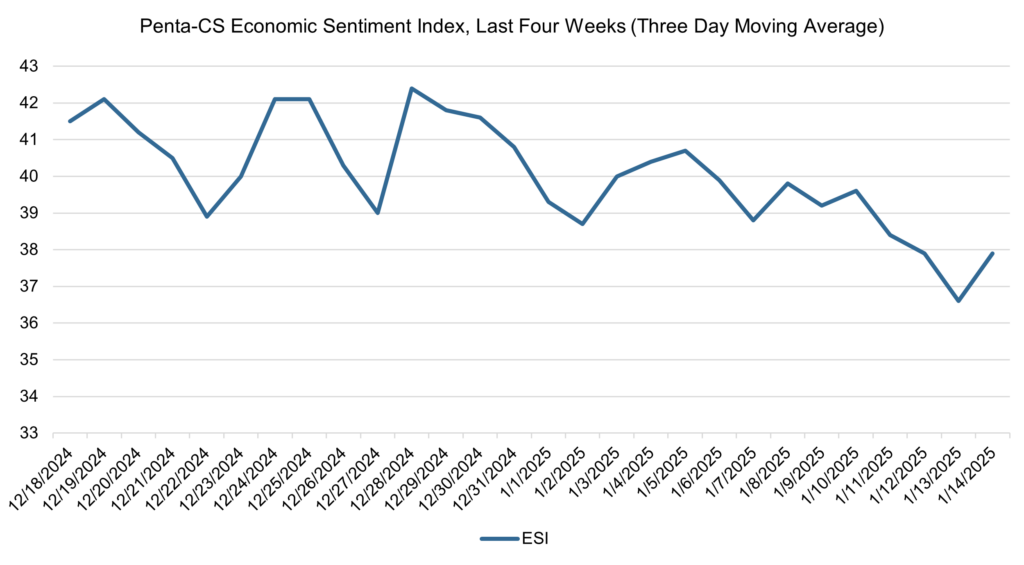
Following a slight rise heading into the new year, the latest biweekly reading of the Penta-CivicScience Economic Sentiment Index (ESI) decreased by 1.9 points to 39.2, the largest decline in over a year. This comes after a modest rise in the previous reading, where economic sentiment increased 0.3 points during the two-week period ending on New Year’s Eve.

Four of the ESI’s five indicators decreased during this two-week period, offsetting all gains observed in the previous period. This period, confidence in making a major purchase decreased the most, falling 3.3 points to 26.8.
—Confidence in personal finances decreased 3.2 points during this biweekly period to 59.0.
—Confidence in buying a new home decreased 1.9 points during this biweekly period to 23.7.
—Confidence in finding a new job decreased 1.9 points during this biweekly period to 40.3.
—Confidence in the overall U.S. economy increased 1.1 points during this biweekly period to 46.4.
The Commerce Department’s third estimate of U.S. third quarter real GDP was revised upward, showing that the U.S. economy expanded at an annual pace of 3.1 percent. This marks the 10th consecutive quarter of positive real GDP growth.
The December Jobs Report showed that the economy added 256,000 jobs last month, much higher than the Dow Jones consensus forecast, demonstrating the ongoing strength of the American labor market. The unemployment rate fell to 4.1 percent from 4.2 percent last month. The U.S. Bureau of Labor Statistics reported that this represents an increase in employment across the healthcare, leisure and hospitality, and government sectors as well as a notable rise in retail employment before the holiday shopping season.
Despite a brief period of declining mortgage rates in late September following the first interest rate cut by the Federal Reserve in four years, 30-year mortgage rates remain elevated at 6.93 percent, the highest rate since early July 2024. Sam Khater, Freddie Mac’s Chief Economist, stated in a press release that “the continued strength of the economy has put upward pressure on mortgage rates, and along with high home prices, continues to impact housing affordability.”
The BLS released the December Consumer Price Index (CPI) report, which showed that consumer prices increased 0.4 percent in December and have risen 2.9 percent annually. This represents the CPI’s largest month-over-month increase since February and demonstrates that the Fed’s fight against inflation remains unfinished.

The past four weeks have been marked by fluctuations in the ESI’s three-day moving average. The moving average began the last four weeks at 41.5 on December 18. It then oscillated between decreasing and increasing, peaking at 42.4 on December 28, before declining for five days to 38.7 on January 2. The three-day moving average then rebounded to 40.7 on January 5 before falling again to a low of 36.6 on January 13, and then ticked upward to 37.9 on January 14 to close out the session.

The next release of the ESI will be on Wednesday, January 29, 2025.